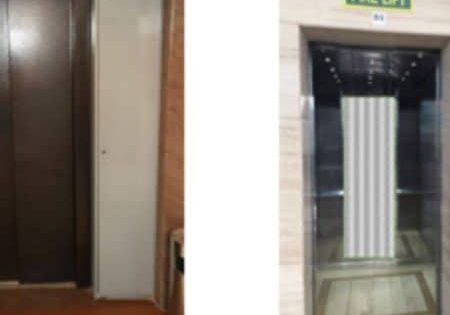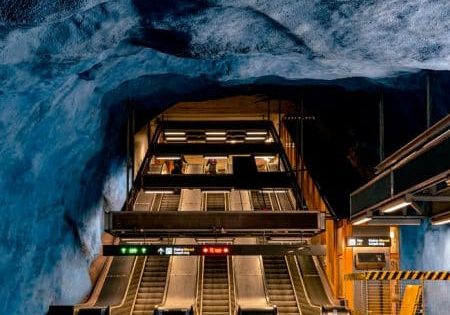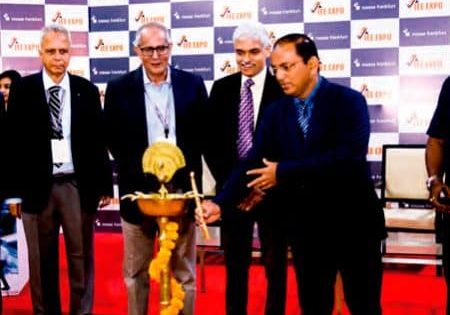All stakeholders should be aware of contributing factors that can lead to diminished safety of elevators and escalators.
by Max Guijt
This article was first presented at the 2019 International Elevator & Escalator Symposium in Las Vegas. For more information on December 7-8, 2020’s event in Amsterdam and to participate, visit International Elevator & Escalator Symposium.
The safety of elevators and escalators depends on the quality of the design, manufacturing process, installation, correct testing/commissioning and maintenance/safety inspection regime during their lifecycle. We at Shanderry Elevator & Escalator Consultants, Ltd. are often engaged by owners when they have persistent issues with their equipment. Invariably, we find that the issues relate to equipment not set up correctly at the commissioning stage or maintained incorrectly, or that the maintenance provider lacks the knowledge or diagnostic tools for that type of equipment. Often, when we take a closer look at the equipment, we find shortfalls in relation to essential health and safety requirements (EHSRs) that are not necessarily contributing to the issues, but pose a hazard and potential risk.
In all European Union (EU) countries and the U.S., there are mandatory requirements related to elevator and escalator safety inspections by state or independent inspection bodies. In the EU, independent safety inspections for escalators are not always required, depending on the jurisdiction. We regularly find elevators and escalators that have been assessed by a safety inspection body that fall short of applicable health and safety standards. These shortfalls are not mentioned in the safety inspection report. To explain this better, two examples of recent findings follow.
Example No. 1
After persistent issues with escalators in Boston, the owner ultimately requested an independent review of the installations. The request for this review started with the question, “Is it normal that escalator handrails need to be replaced after two years?” Industry norms indicate an expected handrail lifespan of approximately seven-plus years, provided correct maintenance is conducted.
The escalators in question were newly installed and handed over to the owner in 2016. The persistent issues started from the day the units went into service. After approximately 14 months, the owner lost confidence in the original equipment installer, as no resolution was provided. The owner decided to change maintenance providers from the original installer. However, changing providers did not resolve the issues. After the equipment was in service for 24 months, the owner of the equipment sought an independent expert opinion.
Upon assessment, several issues were noted. One was that the gaps between the skirting and steps exceeded the 4-mm maximum. This was not causing breakdowns, but it highlighted a significant risk of feet or objects becoming trapped between stationary skirting and moving step. Another issue found was that, from the commissioning stage, the activation force setting of the combplate switches was incorrect. This caused the escalators to shut down every time a combplate was hit with a force above the force setting. This is undesirable and can cause people on the escalators to fall when the escalator abruptly stops, in addition to the inconvenience of the escalators being constantly out of service. The setting was around 600 N (135 lbf), and the manufacturer’s manual stated these needed to be set at around 1,700 N (380 lbf).
We regularly find elevators and escalators that have been assessed by a safety inspection body that fall short of applicable health and safety standards.
Numerous other issues were found. These ranged from incorrect handrail tensioning, incorrect step track setup, incorrect step-chain tensioning to other items. Combined, the issues caused excessive wear of the handrails and step chains, of which the client was not made aware. The assessment was conducted in accordance with the relevant ASME A17.1 code and the manufacturer’s instructions and guidelines.
The assessment concluded the incorrect settings and adjustments must have been present at the commissioning stage. The escalators received the mandatory safety inspection from the AHJ. It was expected that the inspection body conducting the inspection would have noted the incorrect settings and safety dimensions in its report, but it did not.
We investigated the maintenance procedures, and it was found the maintenance technicians lacked the tools or training to maintain the equipment correctly. They were also not fully aware of the risks pertaining to incorrect safety spaces between steps and skirting or combplate pressure settings.
Example No. 2
An exercise was conducted recently for a public state body in an EU country, whereby a sample portfolio of 50 elevators was assessed. The state body had approximately 600 elevators in its portfolio. The exercise was instigated by several incidents that occurred for which the state body was ultimately liable.
| Level of Risk | Accumulated No. of Risk Items Identified on 50 Elevators |
| Extreme | 4 |
| High | 234 |
| Medium | 341 |
| Low | 270 |
The portfolio contained equipment of nearly all European elevator manufacturers. Approximately 70% of the portfolio assessed was installed in accordance with the European Lift Directive (95/16/EC) that went into effect in August 1999. Approximately 30% of the equipment was installed before August 1999 and needed to comply with the European Directives for Lifts & Lifting Equipment 84/528/EEC and 84/529/EEC.
The assessment was conducted based on the relevant versions of the EN 81 European harmonized standard series. An electric elevator installed in 1990 was assessed against EN 81-1:1984. If the elevator was installed in 2007, it was assessed against EN 81-1 + A1, A2:2005, etc. All elevators received their mandatory safety inspections from an ISO 17020 accredited inspection body.
The state body (owner) is bound by public procurement rules, and the portfolio is tendered every three to five years. We found that, except for the very recently installed equipment, none of the equipment was maintained by the original installer during its lifecycle. Our assessment did not find any elevator to comply in full with the EHSRs.
Alarmingly, three safety gears were found nonfunctional and one elevator had a bridged door contact. In this instance, a mandated safety inspection was conducted the morning before we made our assessment. It concluded that all equipment had numerous shortfalls in varying degrees when assessed against the relevant health and safety regulations, standards and codes. The number of shortfalls of the 50 elevators is illustrated in Table 1.
When we tried to establish why there were so many shortfalls, we found three common denominators:
- Ninety-five percent of the equipment was not maintained by the original equipment installer or had changed among several maintenance providers during its operational life.
- Eighty-five percent of the equipment did not have manuals or electrical drawings available with the equipment.
- Maintenance providers and safety inspectors were not sufficiently equipped with the knowledge or tools to maintain or inspect the equipment correctly.
In an ideal world, the original equipment installer would be the maintenance provider during the lifecycle of an elevator or escalator. They should have the information, tools and knowledge to maintain their equipment correctly. However, we are not living in an ideal world, and most elevator and escalator maintenance providers will have a range of equipment in their maintenance portfolios they did not install. There are also companies that do not install new elevators or escalators, but only provide maintenance. The market tendency for maintenance providers is to grow their maintenance portfolio. Providers will, in principle, take on any type of unit for maintenance.
In an ideal world, the original equipment installer would be the maintenance provider during the lifecycle of an elevator or escalator.
Elevators and escalators are high-cost maintenance items for owners, who tend to look for the best price available in the market. This is especially true when owners are regulated by internal processes, whereby a portfolio needs to be tendered publicly.
Owners tend to believe that for an elevator/escalator, any reputable maintenance provider can maintain their equipment, regardless of make, type or technique applied. This leads to owners looking for the best market price for maintenance. Owners are not necessarily able to assess if the maintenance provider has the information, tools or knowledge to maintain their equipment. In practice, we regularly note that the maintenance technician has neither the information, tools (especially diagnostic tools) nor knowledge to maintain the equipment correctly. This is becoming more and more evident now, because most new equipment — and especially control systems — is software-based.
We have noted that some OEMs are reluctant, or, in some cases, refuse to supply other providers the necessary tools to gain access to the diagnostic software for troubleshooting, fault-finding or changing parameters. Notwithstanding, a section of the software should be closed-protocol to safeguard the integrity of the safety circuits.
In relation to safety inspection bodies, we find they are usually competent, according to their certification. In practice, we find that, in some cases, the actual inspector is not equipped with the knowledge or correct tools to conduct the inspection appropriately. For example, an inspector might not have door pressure gauges to measure elevator door-closing forces. We have not found any inspection body with access to diagnostic tools.
In jurisdictions where mandatory safety inspections are not enforced by regulators, we find some elevator/escalator owners are not aware of statutory requirements. We note that, in these jurisdictions, it leads to circumstances in which the equipment does not receive any independent safety inspections.
Maintenance providers do not necessarily inform the owners of this statutory requirement, either.
Based on our experience, we reason that correct maintenance and safety inspections stand and fall with quality-control systems by owners, maintenance providers, inspection and accreditation bodies. Quality-control systems, when applied correctly, should identify the shortfalls in documentation, knowledge, training, tools, EHSRs, etc.
Accreditation bodies that certify inspection bodies and Notified Bodies should have a more active role. The quality-assurance schemes with which maintenance providers are accredited are becoming more and more theoretical; theory and practice are proven to not be the same. If the quality-assurance schemes and quality-control systems are applied in practice, and if any identified shortfalls are corrected, elevators and escalators should become safer.
Standardization bodies, in conjunction with elevator and escalator manufacturers, should investigate a system whereby diagnostic tools for all types of elevators and escalators are available to all maintenance providers and inspection bodies.
An example can be taken from the automobile industry. All maintenance providers in the automobile industry can purchase a diagnostic tool they can plug into an OBD II interface with which every modern vehicle is equipped. With the correct software, they can read the basic information of the automobile management systems without compromising the safety integrity of the software or management systems. If this were available in the elevator and escalator industry, it would, in my considered opinion, reduce or negate the risk of not having access to control systems and enhance overall work practices and safety.
Ultimately, this article has taken a very broad stance with the above. As elevator and escalator consultants, we at Shanderry Elevator & Escalator Consultants Ltd. are mostly employed when equipment has problems. Therefore, we seldom see equipment that has no issues. There are certainly owners, maintenance providers, accreditation bodies and inspection bodies taking the correct approach, and that should be recognized.
Correct maintenance and an independent safety inspection regime are essential for continued safety of elevators and escalators. It is, therefore, important that the correct remuneration for the required maintenance or inspection service is negotiated with owners. It is essential that maintenance providers and inspection bodies have the documentation, tools and knowledge available with enough time to conduct their scope of works.
Without this, elevator or escalator safety can diminish over their lifecycle, and the consequences can be catastrophic.
Get more of Elevator World. Sign up for our free e-newsletter.








